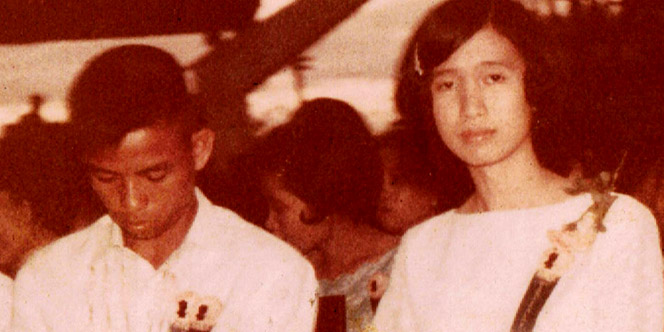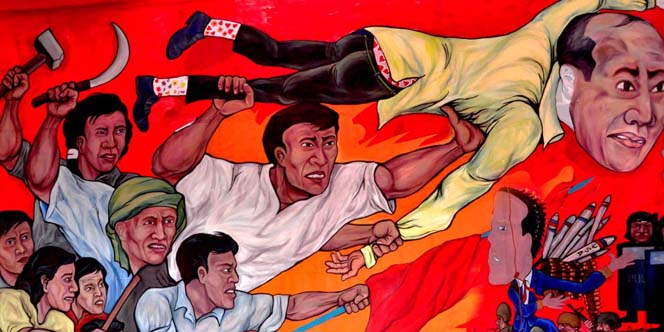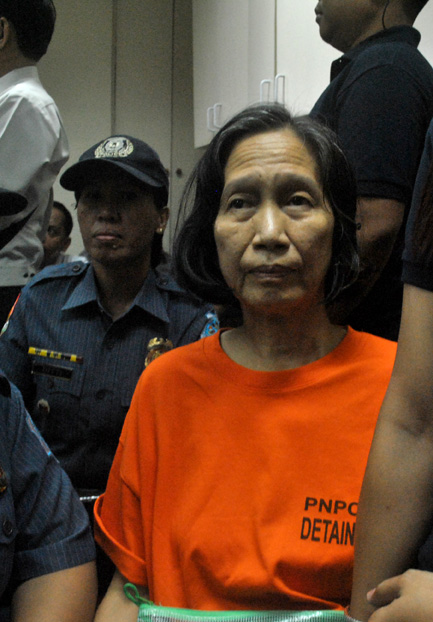A question of sincerity
Peace negotiations between the Government of the Philippines (GPH) and organizations waging revolutionary struggles once again hit the headlines after military and police elements arrested Benito Tiamzon and Wilma Austria, two senior leaders of the Communist Party of the Philippines (CPP). Days after the arrest, the GPH signed the Comprehensive Agreement on the Bangsamoro (CAB) […]


Peace negotiations between the Government of the Philippines (GPH) and organizations waging revolutionary struggles once again hit the headlines after military and police elements arrested Benito Tiamzon and Wilma Austria, two senior leaders of the Communist Party of the Philippines (CPP).
Days after the arrest, the GPH signed the Comprehensive Agreement on the Bangsamoro (CAB) with the secessionist Moro Islamic Liberation Front (MILF). A few people, including pundits in the media, expressed hope that with a peace pact in place for the Bangsamoro, peace and prosperity will thrive in Mindanao at last.
But there is reason for apprehension. While welcoming the peace pact, the Moro Resistance and Liberation Organization (MRLO), a member-organization of the National Democratic Front of the Philippines (NDFP), reminded their fellow Moro brothers and sisters “not to fall into the trap of surrendering and dividing their ranks” and in “accepting US-Aquino regime concessions” in signing the pact. The group raised alarm that the pact will pave way for more foreign plunder of Mindanao’s wealth.
MRLO is not alone in questioning the GPH’s sincerity in implementing peace agreements. Various peace advocates have pointed to the GPH-NDFP peace process, where the Aquino government has refused to implement previous agreements such as the Joint Agreement on Safety and Immunity Guarantees (Jasig) among other GPH-NDFP agreements, as proof that whatever promises of Moro self-determination the Aquino government have promised would ultimately be unfulfilled.
The communist rebels, led in the negotiating table by the NDFP, have a long experience bearing the brunt of Philippine governments’ failure to fulfill previous agreements. The latest of which is, according to peace advocates, blatant violation of Jasig with the arrests of NDFP peace consultants including the Tiamzons.
Promise of peace in Mindanao

With the signing of the CAB in Malacanang Palace on March 27, the Bangsamoro people are promised “self-determination”. This is through creation of a political entity called Bangsamoro, encompassing Moro-dominated areas in Mindanao and replacing the “failed experiment” that was the Autonomous Region for Muslim Mindanao (ARMM).
CAB envisions a political entity that will be, in parts, governed by Bangsamoro leaders and in others by both the central government and the local leaders, and will be implemented in 2016. In return, the MILF agrees to turn over their firearms and armaments to a third party for safekeeping.
But for Philippine Peace Center (PPC), a nongovernment institution that monitors and assists in the peace process, it remains to be seen if this new agreement will succeed where previous agreements like the 1976 Tripoli Agreement and the 1996 Final Peace Agreement between the government and the Moro National Liberation Front (MNLF) failed.
“It remains to be seen whether the CAB will finally satisfy the aspiration and demands of the Bangsamoro (people) to exercise their right to self-determination, the core issue in the struggles of both the MNLF and MILF,” said Rey Casambre, director of PPC and a peace consultant to the GPH-NDFP peace negotiations.
NDFP’s chairperson in the peace negotiations, Luis Jalandoni, opined that the GPH-MILF peace process has still a long way to go, from charter change in Philippine congress to actual implementation. Jalandoni was clear in pointing out that the NDFP believes that the government’s peace agreement with the MILF has been borne out of decades of Bangsamoro armed struggle. After the CAB signing, the MILF, he said, went out of its way to inform the NDFP negotiation panel that even with such agreement in place, their forces will not fight against the communist rebels.
“(Nevertheless) we think he MILF’s belief (that) Aquino (will faithfully implement the agreements) is misplaced, because we can clearly see the violations of their agreements (with the NDFP),” said Jalandoni.
MRLO, meanwhile, pointed out to the various interests the Aquino government seem keen on protecting while engaged in the peace process with the MILF. Al-Qursi, spokesperson of the Mindanao-based underground group MRLO, said that administration allies in Congress have been using the CAB as a pretext to change the 1987 Constitution. These Aquino allies have been pushing to change the provisions in the Constitution barring 100 percent foreign ownership of land and businesses. At the same that the administration pushes for charter change to accommodate CAB, it will be pushing for allowing for 100 percent foreign ownership of land that will undermine national sovereignty and patrimony, and the right to self-determination of the Bangsamoro peoples.
“Before signing the CAB, there was a memorandum of agreement between the local government of Maguindanao and the Univex Corporation of Malaysia together with its local counterpart the Al Mujahidun Agro Resources Development Inc., for 6,000 hectares of banana plantation. And we know that the United States is interested in Liguasan Marsh which is rich in natural gas,” Jihad Al-Qursi, MRLO spokesperson, pointed out.
The Malaysian government was the third-party facilitator in the GPH-MILF peace negotiations, while the US government has been one of its major supporters.
Who blocks the talks?
In the GPH-NDFP peace negotiations, meanwhile, the revolutionary movement under NDFP have stood firm in taking the GPH to account for failure to honor previous agreements. This failure, according the the NDFP, has put the entire process in virtual limbo for the past few years.
The GPH and the NDFP entered into peace negotiations after signing the Hague Joint Declaration on September 1992, during GPH Pres. Fidel Ramos’ term. It defines the agenda and as a framework for the negotiations between the two parties, namely human rights and international humanitarian law, social and economic reforms, political and constitutional reforms, and end of hostilities and disposition of forces. Since then, only one substantive agenda has been signed: the Comprehensive Agreement on Respect for Human Rights and International Humanitarian Law (Carhrihl) in 1999, during the Estrada administration.
Before the Carhrihl signing, the two parties entered into agreement to protect all personalities from harassments, arrests and surviellance those nvolved in the negotiations. This agreement was the Joint Agreement on Safety and Immunity Guarantees (Jasig), signed on February 24, 1995 and took effect when the principals of both parties signed it. The NDFP chairperson Mariano Orosa on April 10, 1992 and Pres. Fidel Ramos on April 25, 1995.
Since then, after two decades, the peace negotiations between the two parties have not progressed significantly.
Unlike then President Arroyo, who publicly closed its door to peace talks and declared its all-out war against the communist rebels, Aquino—at least as far as his and his officials’ declarations go—opened its door for negotiations. In October 2010, both parties reconstituted their respective panels, and after the December 2010 Hong Kong meeting between GPH Panel Chair Alex Padilla and NDFP Panel Chair Luis Jalandoni, the two parties began preparing for the formal resumption of talks.
The GPH-NDFP negotiations resumed their formal talks in Oslo, Norway in February 2011, and even formed a special track in the absence of regular tracks. Informal talks also transpired for the next two years.
At the onset, however, Presidential Adviser on the Peace Process Teresita Deles and the rest of the government panel pushed for a different agenda for the peace talks other than that outlined in the Hague Joint Declaration. The government panel, during the Feb. 2012 formal talks, described the said declaration as a “document of perpetual division”. This is despite the government’s commitment to implement the declaration as a signatory.
“The Hague Joint Declaration has effectively served as the framework and foundation agreement, has made the negotiations move forward, and made possible the other major agreements such as the JASIG and the CARHRIHL. Previous GPH panels have acknowledged and reaffirmed this as fact,” the NDFP clarified.
The NDFP said that the declaration is such because it clearly outlines how genuine and lasting peace can be achieved in the Philippines – through both parties committing to addressing the root causes of the armed conflict. Former Bayan Muna Rep. Satur Ocampo, himself a former NDFP peace negotiator, said that in 1987, the peace panel of Pres. Corazon Aquino led by Sen. Jose W. Diokno “agreed that we should talk about and address violations of human rights first”.
With Benigno Aquino III as president, the government now wanted a new track. In a move that many peace advocates interpreted as Aquino’s disinterest in addressing the root causes of armed conflict, the GPH, in 2013, pushed for a “new approach” to the peace negotiations. This, they said would involve local peace talks, community-based consultations, and peace zones. The GPH said it will address the issues on the ground, and calls on the NDFP to stop violence.
For the NDFP, this “new approach” is a betrayal of the previously signed agreements like the Hague Joint Declaration of 1992. According to Casambre, “This means that the Aquino government is running away from the GPH commitments and from the Filipino people hoping that the peace talks would lead to just and lasting peace.”
Regarding the NDFP forces’ use of revolutionary violence, Casambre said the Carhihl is the mechanism to check and balance it. Both parties can file cases of abuses and violations to International Humanitarian Law to the Joint Monitoring Committee that should monitor and help implement Carhihl. But until now, the committee has not been convened, despite NDFP’s efforts. “We prodded the GPH to convene the JMC to discuss cases of both parties,” said Casambre.
The NDFP said that the Aquino government’s supposed “new approach” is eerily similar to the US counter-insurgency guide of 2009 – the controversial framework of counter-insurgency operations that the US has been using in their bloody military operations in Afghanistan and Iraq. This guid, asserted the NDFP, is also the framework for Aquino’s own counter-insurgency program, Oplan Bayanihan.
“How can localized talks solve problems that are national in nature?” Casambre said. He said that economic policies do not come from local governments in provinces and regions. Economic reforms, he added, should be examined and reformed in a national scale to achieve genuine peace.

Placing negotiators in harm’s way
The arrest of the Tiamzons in March 22, 2014 laid bare GPH’s refusal to implement Jasig. Presidential Spokesman Edwin Lacierda said that the Tiamzons were not accorded immunity from arrest because “there was a failure in the verification process of identities of supposed NDF consultants in the Jasig list.”
Lacierda was referring to the Jasig list of NDFP consultants that were contained in diskettes in the possession of the NDFP that were destroyed in 2007 when the Dutch police, with tacit approval from then Arroyo administration officials, raided the NDFP office in the Netherlands.
“This failure had the effect of rendering the Jasig inoperative for those using aliases and those who are not directly involved in the peace process. If indeed Benito Tiamzon was listed under an alias, he is no longer covered by the Jasig,” GPH negotiating panel stated, after the arrests.
But Rachel Pastores, legal counsel for the NDFP negotiating panel, clarified that as long as peace negotiations are not terminated by either party, Jasig will be operative. This is clear in the agreement’s general provision.
GPH’s Alex Padilla complained in public that the NDFP has been invoking Jasig every time a rebel leader is arrested. But Pastores said this is untrue. “There is no truth to that claim, that every time there are arrests of rebels the NDFP automatically claims they are Jasig holders. There are only 85 names (submitted by the NDFP panel). This can only be supplanted if both sides agree to it,” she explained.
The NDFP clarified their demand to release the couple and the other peace consultants is not a precondition for the resumption of talks. What it is merely insisting on, in fact, is that the government comply with Jasig. They also, time and again, proposed to GPH to reconstitute the Jasig list that was destroyed. But the GPH dismissed the proposal. GPH chief negotiator,
Padilla, also said that the rebel leaders, after having been freed due to Jasig, merely go back to the undergound movement and assume tasks of overthrowing the government. But many rebel peace consultants, in fact, were released on the strength of their legal defense (and weaknesses of the cases against them). Among those released were Randy Malayao, who had his cases dismissed despite the government’s non-compliance to his immunity status under Jasig.
Elusive next agenda
Deles, for her part, had been harping on the possibility that peace talks with the communist rebels could prosper “now that the Tiamzons had been arrested.” Padilla added that after the arrests, the NDFP is now proposing informal talks with the Aquino government.
This was belied by Jalandoni, who said the statement is “completely untrue and malicious”.
“He knows that in our meeting in Makati on 27 February 2014, we already stated our willingness to agree with the proposal of the Royal Norwegian Government to hold informal talks or consultations with the Aquino government in May 2014,” Jalandoni said, in a press statement.
The NDFP has been consistent in pushing through with the talks, in whatever means—as long as both parties implement previously signed agreements and continue with the substantive agenda laid out in the Hague Joint Declaration, and carry on with the task of addressing the root causes of armed conflict.
Despite this, there is reason to doubt that the GPH is interested in advancing to the most important part of the peace negotiations, said Randall Echanis, a peace consultant and member of the NDFP Reciprocal Working Committte on Social and Economic Reforms.
Echanis explained that the next substantive agenda after Carhihl is the socio-economic reforms. As early as 1998, after Carhihl was signed by both parties, the NDF submitted its first draft for the Comprehensive Agreement on Social and Economic Reforms (Caser). It conducted national consultations with different sectors before submitting its final draft in 2004.
Echanis explained that the NDFP’s Caser has two principles: the first is upholding the country’s economic sovereignty and independence; and two is achieving social justice. From these two principles, the NDFP Caser draws the two main programs which to them are crucial in addressing the roots of the armed conflict. These are genuine agrarian reform and national industrialization.
The NDFP views that the root cause of the armed conflict is the agrarian unrest in the countryside. Large tracts of lands are still monopolized by a few local landlords, while trade has been dominated by multi- and transnational corporations led by that of the US.
But the Philippine government, from the Arroyo to Aquino administrations, has been opposing the NDFP’s proposals on agrarian reform and national industrialization. The GPH drafted its counterpart proposal only in 2011.
“In 2011, the GPH panel presented a five-page proposal (that states) that the fundamental problem of the Filipino is climate change,” Echanis said. The GPH counter-proposal to agrarian reform is “asset reform” and “industrial policy” that includes more foreign investment as a counterpoint to the NDFP’s national industrialization proposal.
Echanis said the GPH is avoiding fundamental changes in the Philippine society, one of which is land monopoly and exploitation of the peasantry by the landed few. A good example he said, is the case of Hacienda Luisita: despite Supreme Court decisions favoring Luisita farmers, the hacienda land has not been distributed.
“What can we expect from the panel that has a landlord principal,” he said, referring to President Aquino.
The NDFP has said it is ready to wait for the next administration for the continuation of the peace negotiations—even as it does not terminate (yet) peace negotiations with the Aquino administration. The prospects for genuine and lasting peace, based on justice, meanwhile, continue to get dimmer under an administration that, among other things, refuses to abide by its own promises.




